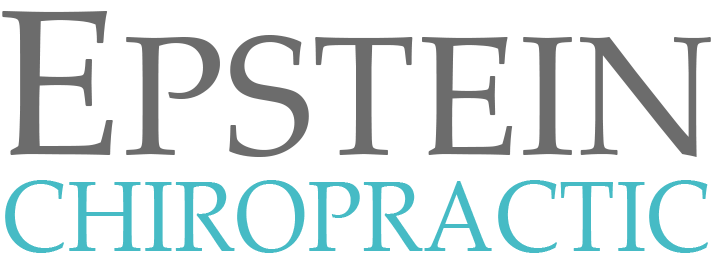Chiropractic Treatment Techniques
There is a wide variation of techniques used by different chiropractors. Chiropractors focus on dysfunctions that can result from irregularities spinal structure or movement. They rely heavily on hands-on procedures to determine structural and functional problems, and they use manipulation to promote normal bodily function correcting or preventing these structural deviations. The principal procedure used by many chiropractors is a form of manipulation known as adjustment that refers to a variety of manual mechanical interventions. There are about 55 adjustments in a chiropractor’s repertoire. Some of them are:
Manipulation
Manipulation is the movement of short amplitude and high velocity that moves the joint beyond where patient’s muscles could move the joint by themselves but short of ligament rupture.
Mobilization
Mobilization is the movements administered by the clinician within physiologic joint space in order to increase overall range of motion.
There are hundreds of ways or techniques to adjust the spine. Each chiropractor becomes highly skilled in a variety of adjustment procedures that are most suitable for your age, body type and condition. Some of the most common chiropractic techniques used today are:
Activator method chiropractic technique
The activator method chiropractic technique (AMCT) involves having the patient lie in a prone position and comparing the functional leg lengths. Often one leg will seem to be slightly shorter than the other. The chiropractor then carries out a series of muscle tests such as having the patient move their arms in a certain position in order to activate the muscles attached to specific vertebrae. If the leg lengths change, that is taken as a sign that the problem is located at that vertebra. The chiropractor treats problems found in this way moving progressively along the spine in the direction from the feet towards the head
Applied kinesiology
Applied kinesiology (AK) is a pseudoscientific technique in alternative medicine claimed to be able to diagnose illness or choose treatment by testing muscles for strength and weakness. Current evidence does not support the use of applied kinesiology for diagnosis of any illness. Applied kinesiologists are often chiropractors, but they may also be naturopaths, medical doctors, nurses, physical therapists, or veterinarians. According to their guidelines on allergy diagnostic testing, the American College of Allergy, Asthma and Immunology stated there is “no evidence of diagnostic validity” of applied kinesiology, and another study has shown that as an evaluative method, AK “is no more useful than random guessing.”
Applied Kinesiology, as described above, should not be confused with Kinesiology, which is the scientific study of human movement.
Neuromuscular therapy
Neuromuscular therapy (NMT) is an approach to soft tissue manual therapy in which a practitioner applies quasi-static pressure to soft tissue in order to stimulate skeletal striated muscle. Often these areas of muscle are myofascial trigger points. NMT practitioners claim to balance the central nervous system (brain, spinal column and nerves) with the structure and form of the musculoskeletal system.
Through applied knowledge of trigger points, neuromuscular therapy addresses postural distortion (poor posture), biomechanical dysfunction, nerve compression syndrome, and ischemia.
In NMT, one must apply manual pressure perpendicular to the skin surface if muscle is to be stimulated.
Activator
Detects and corrects dysfunction using a small tool which delivers a light and measured force to correct misalignments. It is used to gently and painlessly move the vertebrae.
Cox Flexion Distraction
Involves traction or stretching of the spine designed especially to correct lower-back pain.
Logan Basic Technique
A gentle, sustained pressure is exerted at the base of the spine. Correcting the sacrum corrects the rest of the spine.
Motion Palpitation
Joints felt as they are moved to determine fixations. In general, an adjustment consists of a sudden, short, controlled thrust against a joint. The chiropractor will move the affected joint to the limit of its range of movement and then make a rapid thrust beyond this point to stretch the joint capsule and surrounding tissues.
While undergoing adjustment, it is important that the patient remain relaxed for this to be effective. A certain speed of the thrust is employed to ensure that the patient’s muscles have no time to contract and so restrict the movement. Cracking or popping sound may be heard during the thrust: this is caused by gases in the synovial fluid (the lubricating fluid inside each joint capsule) and is harmless.
Most chiropractors will treat only a joint that they believe is misaligned or subluxated. Some, however, may treat the whole spine or concentrate only on one area.
It is important to remember that all manipulations involve a degree of risk, however small. So undergo adjustments only when necessary and then by experienced practitioners.
Craniosacral therapy
Craniosacral therapy (CST), or cranial-sacral therapy, is a form of bodywork or alternative therapy focused primarily on the concept of “primary respiration” and regulating the flow of cerebrospinal fluid by using therapeutic touch to manipulate the synarthrodial joints of the cranium. To do this, a practitioner will apply light touches to a patient’s skull, face, spine and pelvis. Craniosacral therapy was developed by John Upledger, D.O. in the 1970s, and is loosely based on osteopathy in the cranial field (OCF), which was developed in the 1930s by William Garner Sutherland.
According to the American Cancer Society, although CST may relieve the symptoms of stress or tension, “available scientific evidence does not support claims that craniosacral therapy helps in treating cancer or any other disease”. CST has been characterized as pseudoscience and its practice called quackery.
